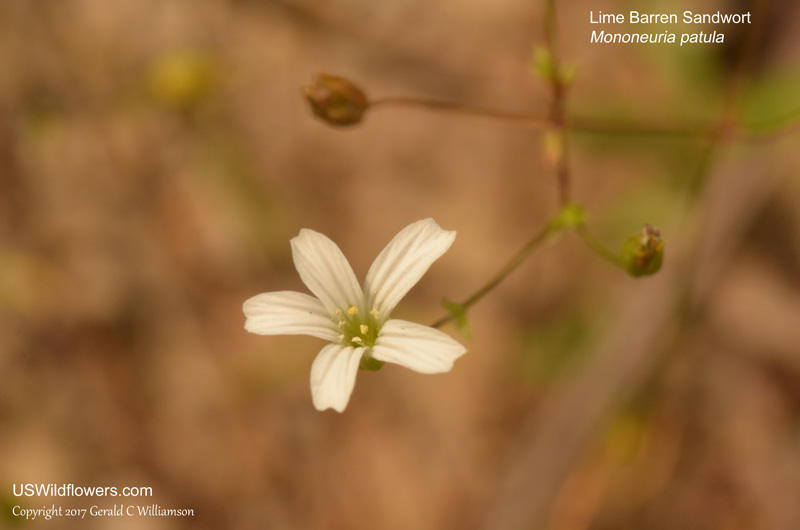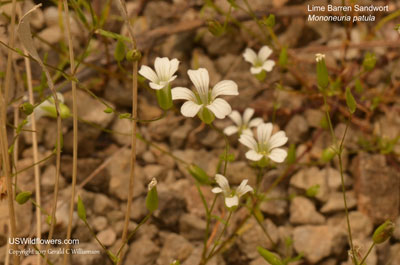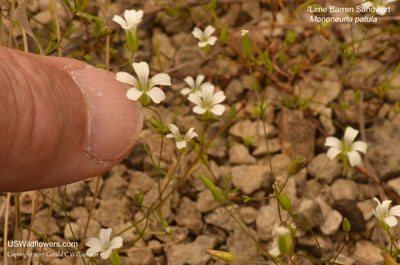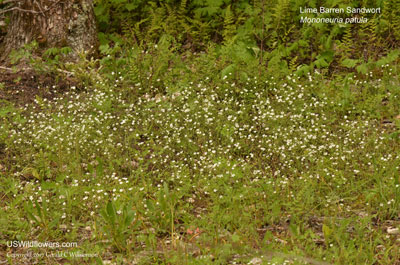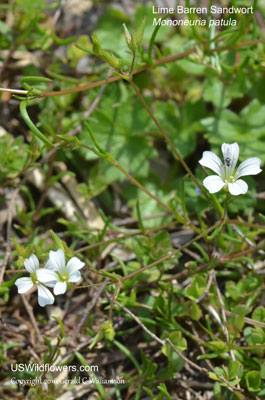Wildflowers of the United States | |||||||||||||
| |||||||||||||
Mononeuria patula - Lime Barren Sandwort, Glade Sandwort, Pitcher's Stitchwort. Mononeuria patula is a new name for Limestone Barren Sandwort. Until 2014 it was known as Minuartia patula, and before that name it was known as Arenaria patula. Minuartia was a large and varied genus, with over 175 species in the Northern Hemisphere, 33 in North America. Dillenberger and Kadereit, in their 2014 paper Maximum polyphyly: Multiple origins and delimitation with plesiomorphic characters require a new circumscription of Minuartia (Caryophyllaceae), proposed taking most of the species out of Minuartia and placing most of them in 10 additional genera, including Mononeuria, into which the species presented here was placed, along with 8 other species. These 9 species are characterized by being annual or biennial, and have notch-tipped (or at least flattened) petals which are twice as long as the sepals. While most publications still use the Minuartia name, it seems that the reclassification to Mononeuria patula has been widely accepted, so I'm going with that name.
| Mononeuria patula is a plant of rocky outcrops and meadows and openings in limestone barrens and cedar glades in the east-central part of the United States, from eastern Texas and Oklahoma north to Minnesota and east to Pennsylvania south to Georgia and Alabama. It is protected in at least Illinois, Indiana, and Ohio. Note that another species, Mononeuria muscorum, is also known by the common name Limestone Barren Sandwort. The differences in the two species are difficult; M. muscorum will have 3-veined sepals, while those of M. patula may have either 3 or more frequently 5 veins. The leaves of M. muscorum are usually longer and wider than those of M. patula. Found in: AL, AR, GA, IL, IN, KS, KY, LA, MN, MO, MS, OH, OK, PA, TN, TX, VA, WI Leave comments on Mononeuria patula at this link.  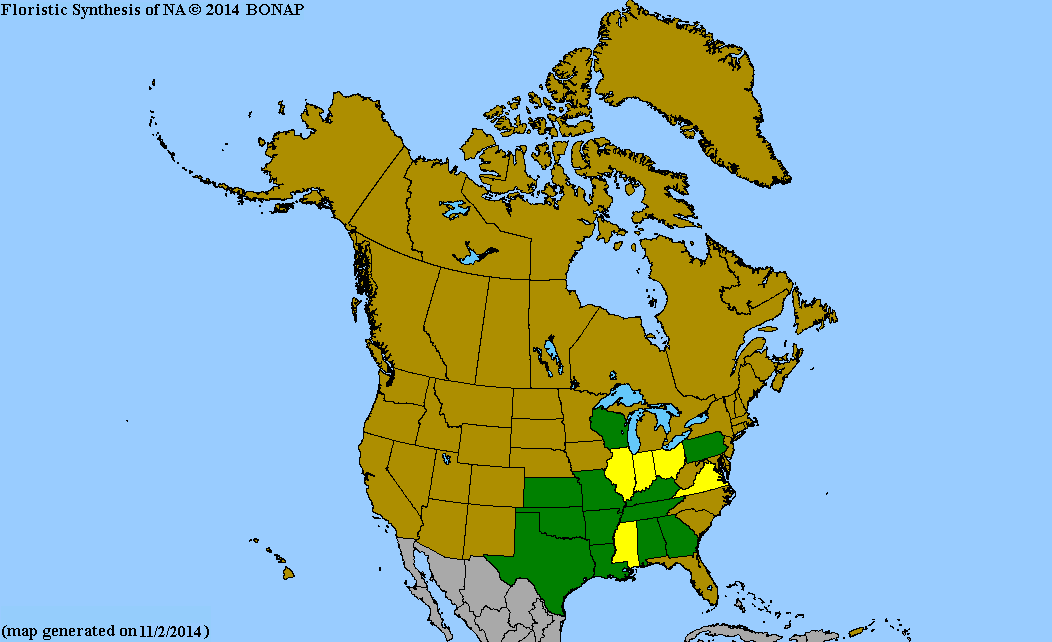 Map courtesy of The Biota of North America Program. Map color key Search Our Database: Enter any portion of the Scientific, Common Name, or both. Do a general Google search of the entire site: #ad #ad
| #ad
| | ||||||||||
|
Commercial / Cookie Notice Looking for Wildflowers for a specific state? Check here: | |||||||||||||
|
All content except USDA Plants Database map Copyright Gerald C. Williamson 2025 | |||||||||||||
Code Update 20230302

